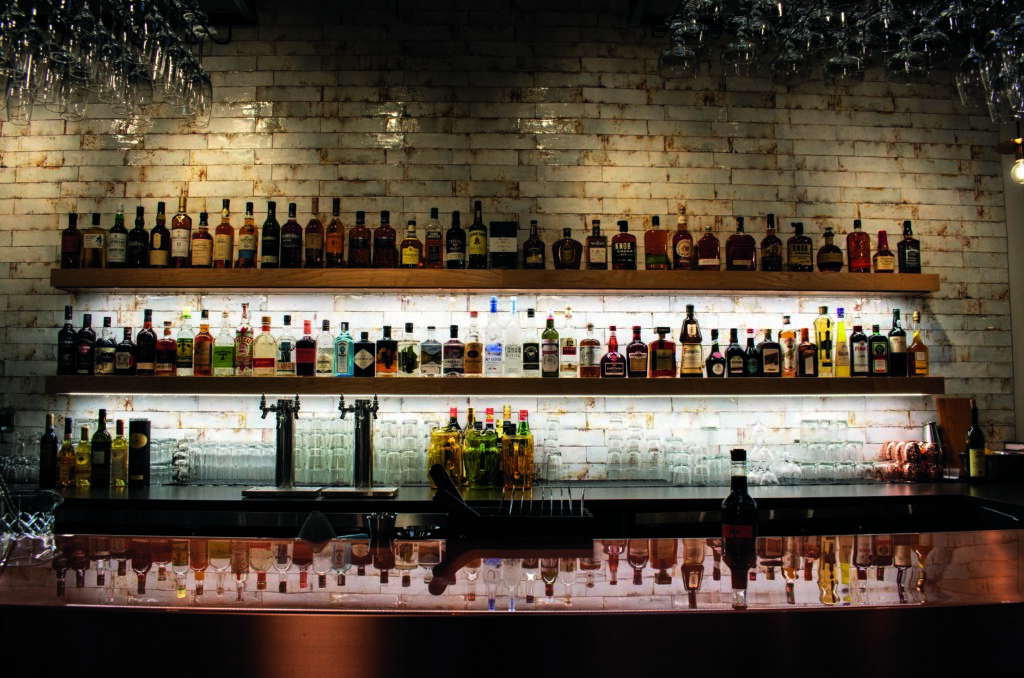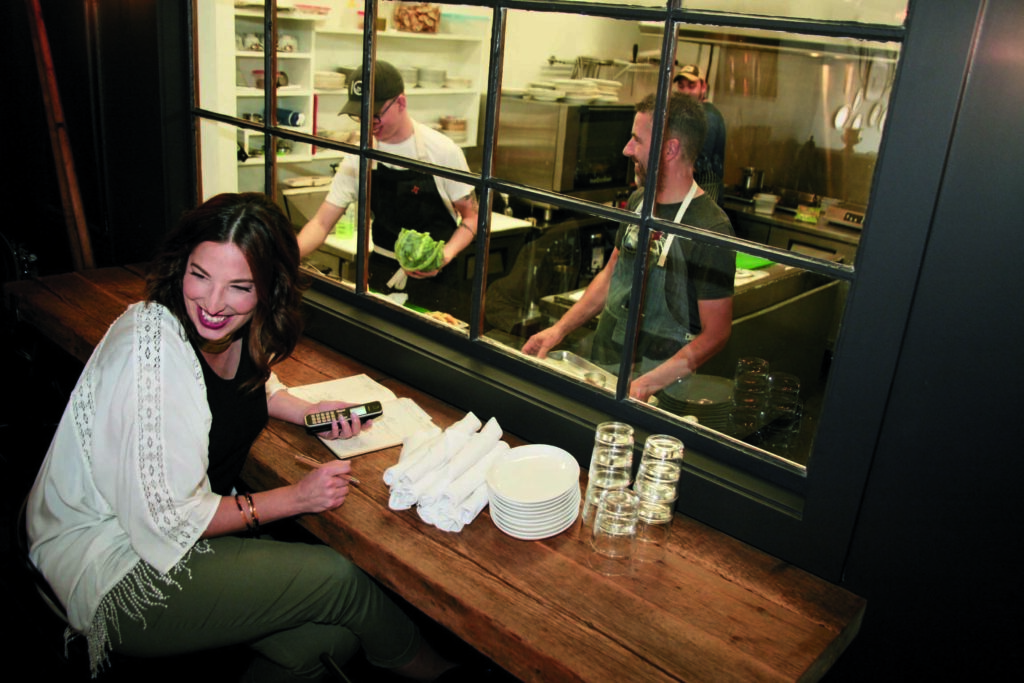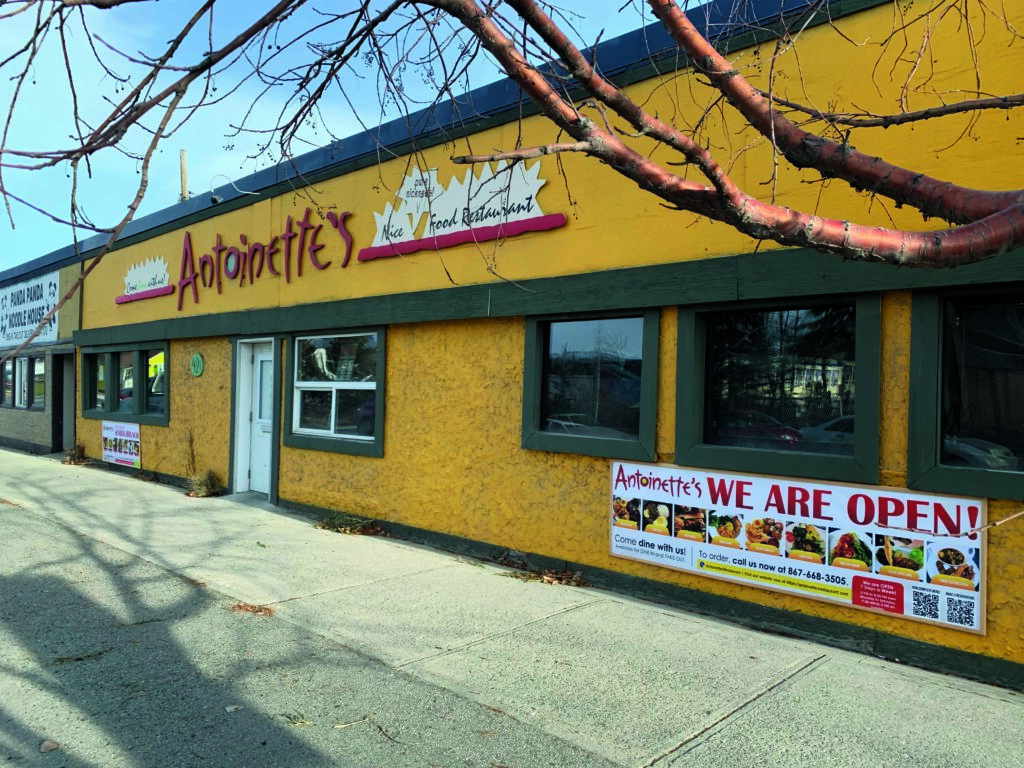The Evolving Role of Restaurants
While the global pandemic is not yet over, at the time of writing, Canada’s high rate of vaccination and overall declining COVID-19 case count means there’s finally some light at the end of the tunnel. Despite nearly two years of devastating closures and restrictions, staff layoffs and shortages and rising food prices, there’s a small but growing sense of optimism about the future in the foodservice sector. As what we hope was the worst of the crisis recedes, Restaurants Canada asked leading restaurateurs how they coped and what they’re planning for this next stage.
WHAT CHANGED?
Odla
From winter patio experiences to prepared at-home meal kits, cocktail kits and grocery items; takeout food for pickup/ delivery; socially distanced farm dinner and tours – we have tried it all.”Lacey Sellinger, Odla,
Saskatoon, Saskatchewan

The wave of closures and restrictions – which were both intermittent and prolonged – caused deep uncertainty in the foodservice sector. It also led to incredible innovation across the country. Restaurateurs rolled up their sleeves and adapted, modifying menus and processes with hard work and innovative flair. “What didn’t we do!” said Lacey Sellinger, general manager, co-owner and sommelier of Odla, a farm-to-table restaurant and market in Saskatoon, Saskatchewan. “From winter patio experiences to prepared at-home meal kits, cocktail kits and grocery items, takeout food for pickup/delivery, socially distanced farm dinner and tours – we have tried it all.”
11th Mile

“We packaged a one-hour cooking and cocktail class for groups of any size to purchase on Zoom. We made sure to keep the offering simple so that people wouldn’t have to go to the grocery store or seek out specific kitchen tools. We tried everything to keep our staff working. One idea that took off was sending our bartender to people’s homes for small private parties.”Jennie Wilson, 11th Mile.
“We knew people still wanted a break from cooking, but our food isn’t really suited to takeout,” said Jennie Wilson from Fredericton, New Brunswick’s 11th Mile. They offered meal kits instead. “We figured most people would spend ten minutes at home to get a restaurant-quality meal. And we were right!” 11th Mile also created a curated list of pantry items like salsa, sauces and soda mixes to jazz up home cooking, and helped people make up for missing celebrations by offering special meals for holidays like Valentine’s Day and even take-home taco parties. “Ultimately, with the advocacy of Restaurants Canada, we were granted the right to sell cocktails and wine to go. That made a huge difference and made take-home options a lot more fun.” 11th Mile is far from the only restaurant with a menu that isn’t entirely suited to takeout. Joshua Mott, owner of Her Father’s Cider Bar in Toronto, Ontario, felt the same. Though Her Father’s Cider Bar began (and continues) to offer takeout as an option, it wasn’t a significant part of their business. What really did take-off was the ability to deliver cider to customers at home. “The biggest part of our business was takeout growlers. It meant we could keep purchasing from our suppliers.”
Those growlers were hand-delivered by Mott’s staff. “At least 75 per cent of our staff stayed on throughout. Anyone who wanted to work was given hours.” Keeping staff allowed for maximum flexibility. When the closures were lifted for a short period, Her Father’s Cider Bar was able to open its doors, then swiftly readjust to pickup/delivery only when strictures were put back in place. It wasn’t easy. “March 2020 was a really trying period. It was a tough decision to stay open, but we’ve been pretty fortunate. We really had the support of the neighbourhood.”
Gladys Caribbean Restaurant

As dine-in slowly becomes a thing again, our focus will be on safety for all customers.”Patrice Gilman, Gladys Caribbean Restaurant
Winnipeg, Manitoba
Others made smaller changes. Patrice Gilman, co-owner and chef at Gladys Caribbean Restaurant in Winnipeg, Manitoba, said that deciding to partner with an online ordering app was a change to their process. “The scope of the restaurant remained the same, we just added a few tablets to facilitate the feature.” Though the app was a great tool for the pandemic, allowing for safely distanced contact and also for marketing and promotion, Gilman shares the same reservation as many other restaurateurs: the steep cost. “It’s a pricey venture for small businesses like ours.” Though Gladys would like to keep using the technique, the 25 per cent fee makes the decision less than simple. “Based on our forecasting and long term plan, this may not be feasible for the business in the future.”
Odla also made the crucial move to online. “The first thing we did when the pandemic hit was move our Odla Market to an online platform. Essentially overnight we created an online store for people to purchase grocery items for pickup or delivery.” They also adopted a third-party delivery app, which required upgrading some of their technology.
Antoinette’s Restaurant

Up in Whitehorse, Yukon, James Concepcion’s biggest change wasn’t technology-based at all. Concepcion bought Antoinette’s Restaurant in March of 2021. Though closed due to COVID-19 at the time of the purchase, the restaurant was an established presence in Whitehorse. His major change? “I put up a billboard with photos of all the dishes. It’s not beautiful, but it works.” The photos had an immediate impact on web traffic. “Even locals had thought the restaurant was still closed.” Other successful changes included expanding some sections of the menu and offering Sunday brunch choices from around the world. “People couldn’t travel during the pandemic. In my restaurant, you can travel the world in 60 minutes. Sunday is a quiet time in Whitehorse, but people make reservations two weeks in advance. Curious people who would never have come before.”
I think our customers want what they’ve always wanted: a little magic. A place to forget their cares, enjoy each other, and be delighted by the food and drink. They gave up some of that magic to keep us going when things were really tough, and we will always be grateful for it.”Jennie Wilson, 11th Mile,
Fredericton, New Brunswick
WHAT CHALLENGES REMAIN?
Though options are beginning to open across the country, a number of barriers remain. Supply chain issues affect every aspect of the industry. In addition, the foodservice sector has been dealing with a labour shortage for years and the pandemic has amplified that shortage into a genuine crisis. Myth is a Toronto, Ontario restaurant that opened after some restrictions were lifted in June 2021. “Staffing has been a challenge due to the impacts of the pandemic on the hospitality industry,” said co-owner Eileen Tsomaris. “Stock and supply of products have also been challenging to manage for restaurants all over the city. That said, our team’s main priority is to create a remarkable experience for every guest, every time they visit.”
11th Mile’s Wilson faced a similar crunch. “With regards to full re-opening, re-staffing was very difficult. People had, understandably, emptied out of the industry. We were exhausted mentally, but our customers were very excited to come back. It was hard to keep up…we had to dig deep after a very trying period.”
Whitehorse is also suffering a massive labour shortage, but it’s not limited to foodservice. “Everyone is working two or three jobs here. The minimum wage starts at $22/hour. Managers are constantly trying to poach staff from other restaurants.” The shortage extends to housing too. Concepcion’s staff is housed in hotels and he subsidizes some of their living costs. Such competition means third-party delivery apps are off the table, because there’s absolutely no one to make the deliveries. Besides, he says, “It’s a cold city. Even in a thermal box, that doesn’t cut it.
In contrast, at Her Father’s Cider Bar, Mott is fully staffed. Three-quarters of his staff stayed on through the entire pandemic and, now that they’ve reopened, the rest have returned. He praises the effort and ingenuity of his staff, especially Chef Elijah Pang who kept everyone busy and motivated. “It may sound cheesy, but honestly my staff inspires me.”
Sellinger said Odla also faces staff shortages in front and back of house. “But I feel the biggest challenge is trying to balance the guests’ ever-changing comfort level being out in a public space. We want to implement a protocol that ensures all guests feel safe dining in our establishment while still creating a relaxed and pleasant atmosphere.”

WHAT’S NEXT?
As restrictions ease and comfort levels rise, restaurateurs across the country are sensitive to the needs and desires of their guests. As a whole, they’re looking to provide both safety and comfort. “I think Canadians want dining out to be a relaxing experience again,” said Odla’s Sellinger. “A break from the mundane (and the dishes) without the added fear and anxiety brought about by COVID-19.”
“As dine-in slowly becomes a thing again, our focus will be on safety for all customers,” said Gilman. “It has been almost two years since the pandemic inundated the world, and people have developed new ways of coping. Unfortunately that means staying away from public or crowded spaces.” Gladys plans to invest in marketing and promotion to attract guests. “The question will be: What would make people want to come to us? Do we promote our safety protocol and give a sense of peace? Or do we launch an exciting new menu that allows people to forget the two years of TV dinners?”
Myth has made safety practices a priority. “Canadians are looking to dine out in safe and COVID-19-controlled spaces,” said Myth’s Tsoumaris. “Our goal is to serve as an escape from Toronto with delicious food, phenomenal music and entertainment and an ambience that our guests want to return to.”
Joshua Mott knows his customers are eager to get back to a sense of normalcy. He’s more than ready to join them, to leave all the QR codes, online ordering and socially-distanced practices behind. “We take pride in our food, our cider, our service and our space. The last two are fundamental to our business.”
Jennie Wilson, at 11th Mile, summed it up perfectly. “I think our customers want what they’ve always wanted: a little magic. A place to forget their cares, enjoy each other, and be delighted by the food and drink. They gave up some of that magic to keep us going when things were really tough, and we will always be grateful for it.”
Click here to –> Read more on the Pace of Payments in Canada’s Restaurant Industry by Interac.










Food from the heart is so tied to emotions of hearth through restaurants, bistros, khulee katcherees. However, they should be protected from the blunt force trauma of free market economies acting to scale up everything as if food and life was one big monolithic enterprise.